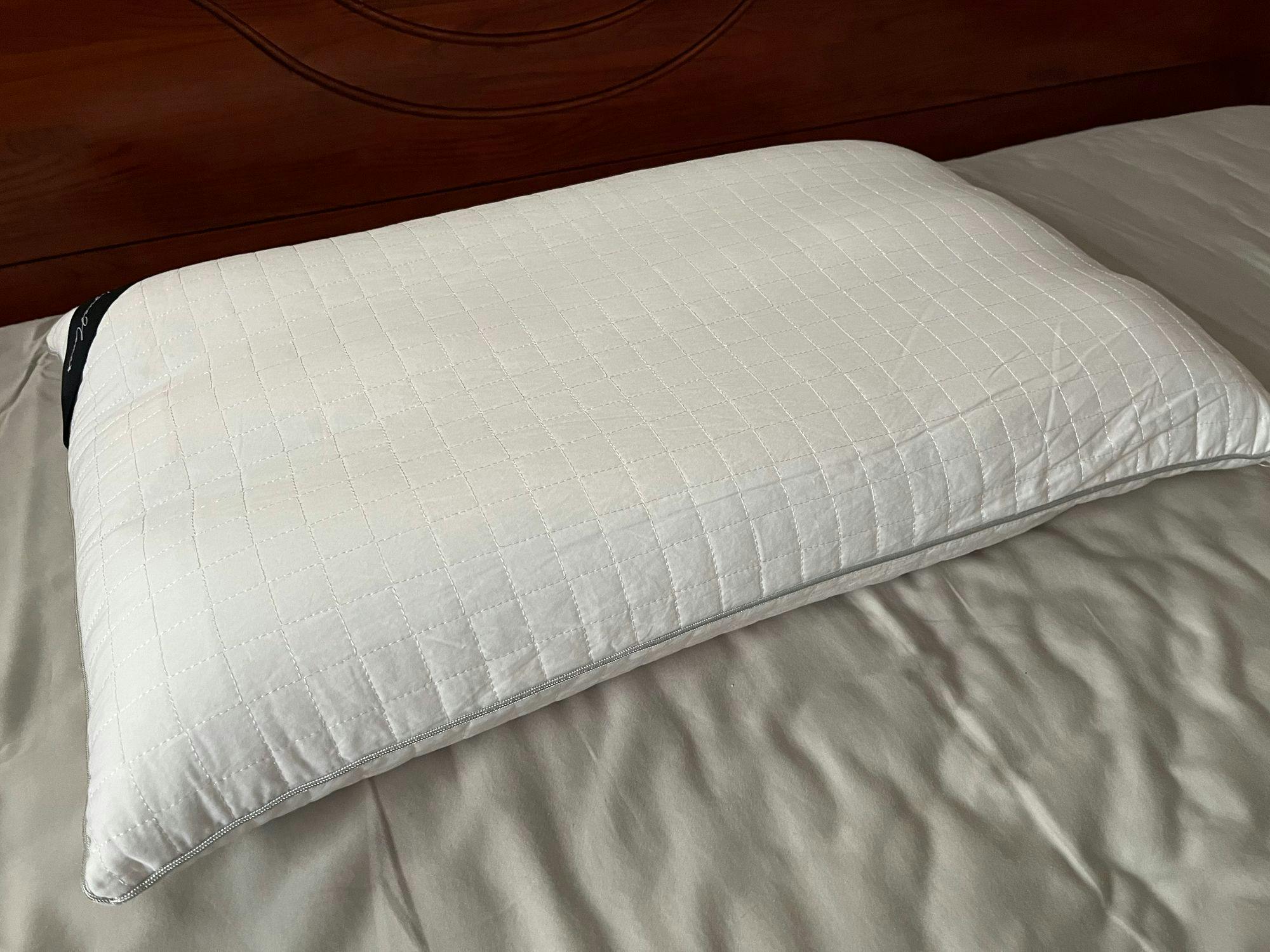Buckwheat pillows, originated from Japan, offer a distinctive firmness and support unlike typical pillows. Filled with natural buckwheat hulls, they contour perfectly to your head, providing a supportive and adaptable feel.
In this article, we uncover the general information and history of buckwheat pillows, from their origin, history to their feel and usage.
Key takeaways:
- Buckwheat pillow is filled with natural buckwheat hulls.
- Buckwheat pillow originated from Japan, which is also known as Sobakawa.
- Buckwheat pillow provides a firm, supportive alternative to traditional pillow materials.
- Suitable for various sleeping preferences, these pillows can be customized and maintained for personal comfort and support.
What is a Buckwheat Pillow

A buckwheat pillow is a type of pillow filled with hulls, the hard outer shells of buckwheat seeds. It is different from traditional pillows that are filled with feathers, foam, or fibers.
These pillows have a long history, originating from Japan, where they are known as Sobakawa. Over the years, they have gained global popularity for their numerous therapeutic benefits.
The unique construction of a buckwheat pillow allows for easy adjustment of the filling according to one's preferences in terms of firmness and support.
The small size of the hulls enables them to be effortlessly moved within the pillow, ensuring a customized sleep experience tailored to an individual's needs. Also, their breathable nature facilitates air circulation, contributing to a cool and comfortable sleep environment.
Origins of Buckwheat Pillows
The buckwheat pillow has a rich and fascinating history that can be traced back approximately 600 years. Originating in Japan, these pillows were first used in bedding and have been a staple in Japanese households.
The invention of buckwheat pillows followed the zukansokunetsu concept, translating to “cool head, warm feet,” which was highly valued in Japanese culture.
Buckwheat itself has its roots in Central Asia, where it was cultivated as a primary or supplementary food source. Eventually, the plant made its way to Europe during the Middle Ages. Today, countries like Russia, China, and Japan are the top producers and consumers of buckwheat.
Composed of Fagopyrum tataricum, the buckwheat plant reaches a height of 2 to 4 feet upon full maturity. For about two to three weeks, the plant produces an abundance of flowers, eventually yielding hundreds of small brown seeds renowned for their nutritional value.
Each grain-like seed, or groat, is encased in a firm outer shell known as a hull. The hulls are a fundamental component of buckwheat pillows, providing both support and breathability.
Materials and Composition

Buckwheat Hulls Characteristics
Buckwheat pillows are filled with buckwheat hulls, the outer hard shell covering the actual buckwheat seed. These hulls provide a firm yet moldable texture, enabling the pillow to conform to the shape of your head and neck.
Buckwheat hulls are hypoallergenic, making them a suitable option for people with allergies. Moreover, they offer excellent air circulation and breathability due to the irregular shapes and interlocking structure of the hulls.
Pillow Case Materials
The pillowcases used for buckwheat pillows come in various materials, including organic cotton, 100% cotton, and bamboo.
These materials offer a soft and comfortable surface to lay your head on while ensuring the durability of the pillow. When selecting a pillowcase material, it is essential to consider the breathability, moisture-wicking properties, and ease of care.
What do buckwheat pillows feel like?
Buckwheat pillows offer a unique feel compared to traditional pillows filled with down, foam, or synthetic fibers. The firmness and adjustable nature of the buckwheat hulls provide excellent support to the head, neck, and spine, promoting proper spinal alignment.
As a result, people who experience discomfort or pain from muscular tension often find relief with a buckwheat pillow.
However, keep in mind that the firmness may not be suitable for everyone, particularly those who prefer a soft, cushiony pillow. It is essential to consider your personal preferences and sleep habits when evaluating whether buckwheat pillows are the right choice for you.
How to Use a Buckwheat Pillow
If you are new to buckwheat pillows, you may wonder how to use them effectively. Here are some general guidelines:
Adjusting the fill: It's important to customize the pillow to your desired firmness and loft. You can do this by adding or removing the buckwheat hulls from the pillow's inner compartment. When first using the pillow, it might not be immediately adjustable, but over time, customization becomes straightforward.
Selecting the right size: There are various sizes available for buckwheat pillows, catering to different sleeping positions. Choose one that provides adequate support for your head, neck, and shoulders, keeping your spine aligned when you sleep.
- For back sleepers: Opt for a medium-sized pillow with a moderate loft to maintain proper neck alignment.
- For side sleepers: A thicker pillow with a higher loft works best to fill the gap between the shoulder and head, ensuring proper spine alignment.
- For stomach sleepers: A thinner pillow with a low loft is recommended to avoid straining the neck.
Placement: The pillow should be placed directly under your head and neck, keeping it properly aligned with your spine. The buckwheat hulls will conform to the shape of your head and neck, providing optimal support.
Maintenance: Although buckwheat pillows are not washable, you can keep them clean by caring for and maintaining them correctly. Remove the buckwheat hulls and wash the pillowcase when needed. Occasionally, air out the hulls in direct sunlight to maintain freshness.
Using a buckwheat pillow requires some adjustment and maintenance, but the benefits of comfort, support, and pain relief are well worth the effort. Following these tips will help you make the most of your buckwheat pillow and enjoy restful, rejuvenating sleep.
Health Benefits
Buckwheat pillows are often sought for their various health benefits. Some of the notable advantages include:
- Pressure relief: They provide excellent support for the head and neck, reducing pain and discomfort in those areas.
- Allergy-friendly: Buckwheat hulls are hypoallergenic, making them suitable for individuals with allergies or sensitivities to traditional pillow fillings.
- Durability: These pillows tend to last longer than standard pillows due to their sturdy filling and resistance to flattening over time.
- Moldability: The unique structure and natural filling material of these pillows make them extremely moldable to the shape of a person's head and neck.
- Breathability: Buckwheat hulls allow for good air circulation, which helps to keep the pillow cool during the night.
While buckwheat pillows offer substantial benefits, they also have some drawbacks to consider:
- Weight: They are typically heavier than conventional pillows, which might be uncomfortable for some sleepers.
- Noise: The movement of the hulls can produce a rustling sound, potentially disturbing light sleepers.
- Initial odor: New pillows may have a noticeable scent that wears off over time; however, it might be off-putting initially.
- Some people may not find them as comfortable as traditional pillows or may be allergic to buckwheat
It is always recommended to consult with a healthcare professional before making changes to your sleep environment, especially if you have specific health concerns.
Environmental Impact and Sustainability
Buckwheat pillows, being eco-friendly and sustainable, contribute positively to the environment. The materials used in their production are biodegradable and have a low carbon footprint.
Buckwheat itself is an environmentally friendly crop, as it requires minimal resources and helps improve soil health by extracting phosphorous and adding key nutrients.
As pillows made from buckwheat hulls have a relatively long useful life, some lasting up to 10 years with regular replacement of hulls, they reduce waste generation in comparison to other pillow types.
Additionally, at the end of their life cycle, these pillows can be recycled, further enhancing their sustainable nature.
These environmental benefits make buckwheat pillow a sustainable choice for the conscious consumers.
Geographical Usage and Popularity
Asia
Buckwheat pillows have long been popular in Asian countries, particularly in Japan and Korea.
In Japan, these pillows are known as "sobakawa" and have been used for centuries.The great breathability of buckwheat pillows makes them ideal for use in the region's hot and humid climate.
In Korea, buckwheat pillows are called "memil makura" and are traditionally used for their cooling and supportive properties. They are especially popular among those who prefer firm support or suffer from neck pain.
North America
Buckwheat pillows gained popularity in North America during the late 20th century.
With the growing interest in natural and eco-friendly products, many people turned to buckwheat as a sustainable and healthy alternative to synthetic pillow fillings.
Although they may not be as widespread as in Asia, buckwheat pillows have gained a dedicated following, with users praising their comfort and support.
Europe
In Europe, the popularity of buckwheat pillows varies by country. Eastern European countries, particularly Russia, have a long history of using buckwheat in various forms, including pillows.
The edible seeds from the buckwheat plant are a staple crop in this region, often used in cooking. As a result, it's not surprising that buckwheat's role extends to sleep products as well.
While buckwheat pillows may be less common in Western Europe, they can still be found and are appreciated for providing a unique combination of comfort and support.
Conclusion
Buckwheat pillows have a long history from Japan. They are great for sleep because they are comfortable, good for health, and made in a way that's good for the planet.
These pillows are a great choice for anyone looking for a natural and comfy way to improve their sleep.
Check out our comprehensive guide to learn more about the buckwheat pillows.
YZ Li
YZ, an engineer with a PhD based in the San Francisco Bay Area, brings practical expertise to Restful Guides. Focused on simple, effective ways to improve sleep and relaxation, YZ offers easy-to-follow advice on choosing the right pillows, bedding, and meditation techniques for a better, more restful life.

